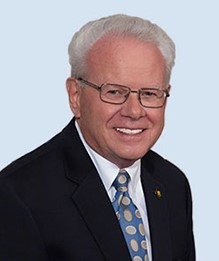
The Expectations Document: Key to a Successful Placement
Dr. Robert Smith
Senior Consultant, Member
The Registry
A set of expectations of interim placements is a central aspect of The Registry’s contracts with college and university clients. It is this same set of expectations that is entrusted to the interim selected for the assignment, and is incorporated within the contract between The Registry and the Registry Member. In 2017, I began serving as a Senior Consultant for The Registry and since that time have facilitated nine Registry interim placements. Prior to that, I served as the Provost of Texas Tech University and orchestrated the hiring of four interim Deans between 2009 and 2013. Thus, I have developed or helped to develop more than a dozen Expectations Documents and witnessed how integral these documents are in the successful placement of top-notch interim presidents and senior administrators.
Clearly, it is critical for the Member, the institutional client, and The Registry per se to know what is expected of each party. A unique set of conditions typically arises with interim placements because Registry Members are unlikely to have had prior experience with the institutions at which they are being placed. At the same time, our clients will have specific reasons for hiring a Registry interim, resulting in a set of initial expectations. The Registry therefore must ensure that clients are satisfied with the final expectations because they will become codified within the contract between The Registry and the client institution and also in the contract between The Registry and its Member. All parties understand that the Interim Registry professional is not being placed simply to be a “caretaker.” Rather, there are likely to be specific goals that the client wishes for the Registry Member to tackle. Thus, the Expectations Document will represent a win-win-win element relative to the Member, the client, and The Registry.
Drafting expectations documents is a primary responsibility of The Registry Principal assigned to each case. The Principal may be a Registry Officer such as President Bryan Carlson or one of the Senior Consultants such as myself. Thus, The Registry’s policy requires the Principal sit in on key meetings with Registry Members and institutional officials to learn of apparent expectations during on-campus interviews and possibly pre-interview video conferences. The Principal will take notes that are used as a basis for development of the Expectations Document.
Once a first-choice selection of a Registry Member is made by an institutional client, The Registry Principal will draft an Expectations Document that will be shared with the hiring officer of the client institution for suggestions for possible revisions and additions. The Principal may also seek input from the Registry Member relative to the final draft expectations document, which is frequently ten or twelve “bulleted sentences.”
Once the Expectations Document is contractually formalized, it becomes a guiding plan for the Registry Member, the client college or university, and most importantly, the hiring official who will be the supervisor for the interim placement. Accordingly, the Expectations Document becomes a “living plan” for the Registry Member’s tenure at the client institution. Indeed, when the Registry Member’s term concludes, the Expectations Document will serve as a guide for the Registry Member’s self-evaluation and a corresponding evaluation by the hiring official. The written evaluation documents then become part of the files of the client institution and The Registry. Thus, the Expectations Document is a critical tool from the beginning-to-end of the Registry Member’s assignment for a successful interim placement.
HIRE AN INTERIM
Searching for an Interim?
Please contact us for more information.

